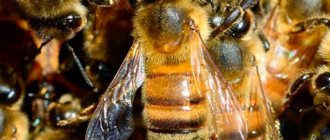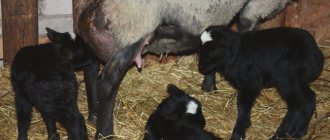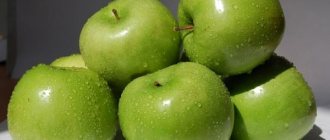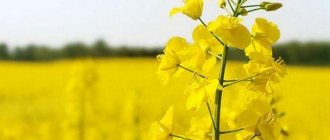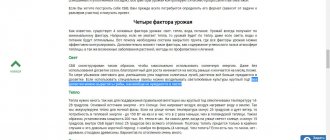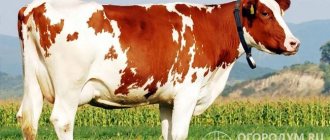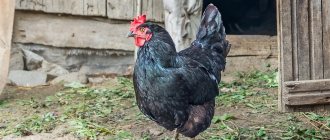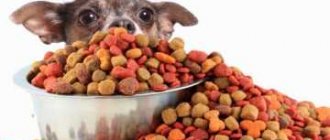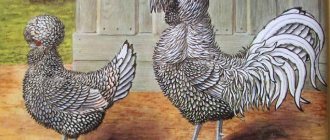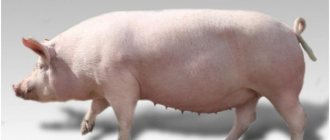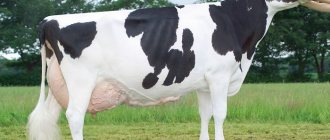The Hereford breed of cows is one of the best for fattening in natural conditions. It builds large amounts of high quality muscle mass.
Suitable for industrial breeding and for private farming to improve local breeds.
Animals of the Hereford breed can be called unique. They:
- are excellent producers;
- gain weight quickly;
- unpretentious in food;
- have an easy-going character.
Breeding history
The breeding of the Hereford cow began in the 18th century, and was finally completed in the 19th century. During this period of time, changes in color were noted. As a result, the characteristic differences in color were the white head, chest, belly area, ends of the limbs and tail brush. The entire remaining surface has a dark reddish tint.
The breed got its name due to its territorial characteristics. It was bred in the English county of Herefordshire. The first export of cows outside the British Empire took place in 1817. The delivery was made to the United States of America, specifically to Kentucky.
On the territory of Russia, the breed in question appeared during the Soviet Union, specifically in 1928. The Hereford breed was used to breed new meat breeds in the USSR. Thanks to Hereford genetics, two cows were bred. The first was on the territory of Kazakhstan, which was called the Kazakh white-headed, and the second appeared thanks to selection in Siberia.
Distribution of the cattle breed
Hereford cattle before the 19th century. lived primarily in the English-speaking countries of North America, Great Britain, the Australian continent and the islands of New Zealand. In the USSR, a large population of animals of this breed was created by Siberian breeders from the State Scientific Institution SibNIPTIZH and Altai NIPTIZH (70-80 years of the last century). Nowadays, Herefords of Siberian selection are common in Russia. In addition, individuals are imported from Australia and Canada.
They differ: Sonsky and Sadsky factory types; classic meat from England; Kazakh white-headed.
As livestock spreads throughout the world, intrabreed types emerge. By the 21st century Several types were developed, and one can claim to be an independent suit. In breeding areas, Herefords are adapted to the local climate.
Characteristics and distinctive features of the Hereford breed
The Hereford cow breed has impressive characteristics that can satisfy the needs of the most demanding farmers. This breed is unpretentious to the food provided, and is also able to get used to different climatic conditions.
Unlike many other breeds, the Hereford is characterized by simple and trouble-free calving. At the same time, young offspring show almost 100% survival rate. Calves are born quite often, they have a satisfactory life expectancy, during which they retain all the necessary functions and quality of meat.
Gaining muscle mass is carried out in the shortest possible time, reaching a decent total weight. The ease of maintenance is also noted due to its structured nature. The distinctive features of this breed include:
- short legs with highly developed muscles;
- thickened skin;
- the udder is small and has poorly functioning mammary glands;
- wide head with white color;
- high level of endurance;
- gaining and further maintaining muscle mass exclusively through hay.
Positive traits
Among the advantages are the following:
- bulls are good producers;
- excellent adaptation to climate and living conditions;
- rapid weight gain in pasture conditions;
- good immune system;
- meat products of the highest quality;
- calm, balanced character.
Herefords are adapted to being kept on pastures all year round. It is best if the land has a large area. Animals show excellent growth even in cases where the pasture is not of the highest level.
We invite you to join our Zen channel and group on VKontakte or Odnoklassniki, where new articles are published, as well as news for gardeners and livestock breeders.
Similar articles:
- Jersey cows: how to keep them?
- Kalmyk cattle breed
- Russian polled cow breed and its features
Varieties of cows obtained as a result of selection of the Hereford breed
The diversity of individual types of Hereford cows is due to mutation processes due to differences in climatic conditions. The second factor in the emergence of new varieties of cattle (cattle) is artificial crossing with the Aberdeen Angus breed in order to achieve the best productivity indicators. At the same time, the genetics of the classic Hereford are stored and used for further cattle selection.
Polled Hereford cow
General characteristics of the Hereford breed
This is a massive breed of cow that is kept for its meat. It has a developed skeletal system that allows it to support the weight of muscle fibers. The stiffness index is 16 units. The average height is 125 cm including the withers. The chest circumference is about 200 centimeters, and the pastern is 20 cm. At the same time, the oblique length is 153 cm with a stretch index of 122.5.
The horns of the Hereford breed are lowered or directed forward. There is also a well-developed torso, which has a barrel shape. The udder is smaller in size.
polled type
It is almost identical in characteristics to the classic Hereford. The main distinguishing feature is the absence of horns, which is due to the mutation process. This fact is accompanied by a minimization of wounds between members of the same herd, which is why this type is very popular among farmers.
Black Hereford
This breed was obtained by crossing the classic Hereford with the Aberdeen Angus and Holstein. This made it possible to obtain an individual with a larger proportion of muscle fibers. In connection with this, black Hereford breeding is carried out in order to obtain increased volumes of meat products.
This variety got its name due to its black color, but other characteristics are almost identical to its original appearance.
Black Baldi
Representatives of the type of cows under consideration were obtained as a result of further selection of the black Hereford. He was re-crossed with a member of the Aberdeen Angus breed. The result was a mixture of blood in a 50 percent ratio. This allowed for an even greater increase in muscle mass.
In this case, it is necessary to take into account the fact that further breeding of offspring within a herd with black baldi is impractical. In this case, there will be a decrease in animal productivity.
What do Herefords look like?
Cows are characterized by a rough type of constitution, and they are easy to distinguish from other representatives of cattle:
- the short neck is crowned by a massive head, painted white;
- horns are light, darker colored at the ends;
- animals of brown-red color;
- there are white markings on the nose and lips, withers, belly and neck;
- the skin is thick;
- limbs are well developed, not long;
- The udder of cows is weakly expressed.
An adult animal grows up to 130 cm, chest girth is 190–195 cm in cows, 210–215 in bulls.
Currently, the Hereford breed has become widespread due to its ease of care, the rapid growth of young animals, and its undemanding diet. Meat cows are capable of producing healthy, strong calves.
Hereford cow with calf
Productivity
When born, calves have the following weight:
- from 25 to 30 kg - heifers;
- from 28 to 33 kg - bulls.
If all feeding rules are followed, it is possible to raise Hereford heifers to a weight ranging from 650 to 800 kg, and bulls - from 900 to 1350 kg. At the same time, calves are able to gain up to one and a half kilograms per day. The largest percentage of useful meat at slaughter is 70 percent of the total mass. The average ranges from 58 to 62%. The result is marbled meat.
Important! It is impossible to get a decent milk yield from a cow of this breed. As a rule, the milk produced by the glands is only enough to feed new offspring.
Meat quality
In terms of its quality characteristics, Hereford meat shares a leading position with the Aberdeen Angus breed throughout the world. The meat is a marbled product, which is used to prepare steaks.
The meat is tender, juicy and high in calories. At the same time, the specific gravity of the pulp ranges from 82 to 84%. The marbled shade is formed due to the red color of the meat, which has white fatty veins.
How much milk does it give?
The constitution of Hereford cows does not allow them to produce a large volume of milk. Its quantity is sufficient to cover the nutritional needs of the new generation. At the same time, the maximum annual milk yield is 1200 liters, and the average is 800 liters. The fat content is 4%.
Caring for young animals after calving
Hereford calves should be breastfed for quite a long time, up to approximately three to three and a half months. They are separated from their mother when the weight of the individual is more than 2 centners.
Feed Supplements: Good concentrated feed and hay can be fed to calves at fifteen to twenty days of age.
Natural and mixed feeding: up to the age of 7.5-8.0 months.
Calves must be kept with cows.
Veterinarians typically prescribe probiotics to young animals.
It is better to use high-quality feed and additives.
Features of keeping animals
The Hereford breed is unpretentious in maintenance, but some recommendations will help minimize the likelihood of disease. After calving, the cow must keep the emerging fetus on suction for 8 months. At the same time, in most cases, Hereford cows are not milked, since the milk yield is quite low.
For keeping cattle, open pastures or sheds with lightweight construction should be used. There is no need to keep the animal on a leash. It will be necessary to prevent the formation of drafts and dampness in enclosed spaces.
For cows with calves, you will need to install a separate pen with a drinking container installed in the central part, as well as another pen for gradual feeding of small animals. To ensure high-quality and safe calving of the female, a special pen should be installed in advance. It should be located at the end of the shed. A Hereford cow preparing to calve should be isolated several days before calving and for 7 days after calving.
It is recommended to use open pastures for keeping cattle in the summer. Cattle eat well on all types of grass, so you don’t have to waste time selecting a special clearing. At the same time, the Hereford breed is resistant to negative temperatures. In this regard, in winter, heating in sheds should be moderate. It is recommended to place a sufficient amount of hay indoors, as calves use it for shelter from the cold.
Help on keeping Hereford cows
The animals are calm, hardy, tolerate long distances well, and are therefore adapted for grazing in different climates.
The weight of cows changes quickly when owners change feed or housing conditions. With high-quality feed, you can gain weight gain of up to 1400-1500 g per day, and when using poor feed, the gain is reduced to half a kilogram per day.
Weight is gained in the summer, the maximum mass is observed in the fall, and by spring the subcutaneous fatty tissue decreases in volume. In September-October, Hereford cattle develop thick wool. Spring is molting time.
Where the winter is harsh, with the onset of frost, cows are moved to closed, dry rooms without drafts. At the same time, a “den” is created for each bull and cow. Cleanliness is necessary not only in the place of detention, but also cleaning of the fur is required. Otherwise, it will start to roll and stop keeping warm.
Hereford cows become frightened by sudden loud noises and unexpected movements. Ideal for them is loose housing, the presence of deep bedding that will not change.
Features of feeding Hereford cattle
To feed the breed of cattle in question, it is not necessary to use expensive, specialized feed. This makes the process of raising cows economical. Hay is used to form the basic diet. Salted barley is used as an additional feed component.
For females feeding calves, the diet should be expanded with the following components:
- minerals (calcium phosphate, bone meal);
- silage;
- roughage.
To ensure a qualitative increase in muscle mass in bulls, they should be fed with the following products:
- concentrates;
- succulent feed;
- calcium, phosphorus, protein;
- legume or cereal hay.
To ensure the growth of calves, feeding should begin after fifteen days of feeding exclusively with the milk of a calving female. In this case, milk feeding continues for 8 months or when the calf reaches a weight of 200 kilograms. Initially, they begin to add hay to the diet.
What to feed this breed
Herefords are unpretentious. On pasture, they eat not only juicy, but also coarse grass. If there is no pasture, then the main food is hay with the addition of salted barley. After calving, cows prefer silage mixed with roughage and necessary mineral supplements. These should include bone meal, as well as phosphates.
Bulls require calcium, legumes, grains, proteins, and concentrates. Feeding depends on the climate in which the animals are kept and the characteristics of their keeping.
Pregnant cows require a special diet. The daily norm should consist of high-quality hay/silage; if calving is in April or May, then in spring and summer it is better to feed the animals green grass with the addition of hay. For one individual – three kilograms of hay per day.
Important
Due to sensitivity to ultraviolet radiation (when the herd is grazing), components that enhance the reaction to sunlight (buckwheat straw) are not added to the feed.
Hay based diet
| Diet components | % |
| Hay | 28,9-30,6 |
| Spring straw | 14,0-14,3 |
| Corn silage | 36,7- 37,9 |
| Concentrates | 17,6-18,4 |
Hay and silage diet
| Diet components | % |
| Haylage | 37,4-40,4 |
| Corn silage | 18,2 — 20,0 |
| Hay | 13,1-15,7 |
| Straw | 12,2 |
| Concentrates | 13,0-14,2 |
| Molasses | 1,7-2,0 |
Features of breeding the Hereford breed
If you follow certain rules for breeding the Hereford breed, you can get marbled meat. At the same time, the useful meat mass at slaughter is about 70 percent of the total. And taking into account the fact that cattle receive most of their nutrition on pastures, the process of weight gain occurs quickly.
The Hereford breed is characterized by late puberty. It is recommended to apply coating upon reaching one and a half years of age. In this case, it is possible to use both natural and artificial fertilization methods.
Artificial insemination is becoming increasingly popular. This is due to the fact that it will be possible to calmly control the entire process, as well as adjust the required calving schedule. The best solution would be to adjust the calving schedule of Hereford cattle for winter and spring. This will help the cow and offspring receive the required amount of fresh grass, which is accompanied by maintaining the profitability of Hereford cattle breeding.
After two months from the moment of fertilization, a pregnancy test should be performed. Although some experts recommend carrying out this procedure three months from the date of seed application. When carrying out the procedure in the early stages, the likelihood of spontaneous abortion increases, as well as erroneous determination of the medical parameters of the fetus.
With proper breeding of Hereford cattle, the herd should be rejuvenated every year, by approximately one-fourth. Accordingly, the same number of adult heads are sent for slaughter.
You will also need to take the following actions to minimize barrenness:
- Eliminate the use of low-quality semen during fertilization by checking each batch of sperm used.
- Record dates of fertilization in journals.
- Carry out periodic examination of the genitalia of female Hereford cattle. If damage is detected, you must immediately seek medical help.
- If there is no effect from insemination in specific cows, they should be isolated and appropriate treatment prescribed.
Healthy Hereford bull
Breeding and care
In general, Herefords are unpretentious varieties of livestock. Therefore, their maintenance does not require special conditions. The only points worth seriously paying attention to are:
- cleanliness in the barn, which must be constantly maintained by regular cleaning;
- separate housing of heifers, bulls and young stock;
- complete exclusion of drafts in the room;
- lack of moisture.
To the main list you can add keeping them exclusively on warm, thick bedding, maintaining a constant temperature regime. When keeping large livestock, it is necessary to organize regular periodic examinations of animals by a veterinarian. It is also imperative to ensure constant access to clean water.
It is necessary to ensure constant access to clean water
Feeding
The unpretentiousness of such livestock is also evident in feeding. In summer, the lion's share of the diet is green grass from pastures. During the cold season it is replaced with hay. To obtain more quality beef, the livestock diet must be supplemented with:
- concentrates (barley and legumes are best);
- beets, which have a beneficial effect on digestion;
- mineral supplements (especially calcium and phosphorus).
Good results can also be achieved if supplements containing large amounts of digestible protein are introduced into the diet.
As for young animals, until the age of 3 months, all nutrients are fully provided by the mother, feeding with milk. In general, weaning occurs at approximately 8 months. By that time, the calf has already gained 200 kg of weight.
The offspring should be transferred to new food gradually. As a rule, young animals are accustomed to hay from the 15th day of life, gradually increasing its amount. It is extremely important to supplement the basic diet of calves with mineral and vitamin supplements. All of the listed foods are fed to babies in a separate, specially prepared pen, where adult cows cannot enter.
Hay
Diseases
The Hereford breed has excellent health indicators, which virtually eliminate the likelihood of disease. Most often, colds are observed, which are caused by non-compliance with the rules of keeping cows, in particular drafts and dampness in the room.
But when breeding Herefords in a hot southern climate, there is a possibility of more serious diseases. They are caused by white markings. At the same time, long daylight hours contribute to the formation of malignant neoplasms in the eyes of animals. Cows that do not have a protective color around the eye contour are susceptible to these problems.
Important! Direct exposure to ultraviolet rays will negatively affect the condition of the udder. Burns are formed, which occur due to the thin and sparse fur coverage of this organ.
It happens that when breeding the Hereford breed, dwarf disease of animals is observed. It is determined solely by genetic indicators. The problem can be eliminated only by identifying and further isolating from the herd the cow that bears dwarf calves.
After calving, cows may experience problems with vaginal prolapse. This complexity is also due to genetic inheritance. But at the same time, there are two more causes of vaginal prolapse:
- improperly organized nutrition of the individual;
- carrying a fetus that is too large.
Health status
The description indicates that the reproductive capacity of animals is maintained until old age. Pregnancy lasts 9.5 months. Heifers have good instinct, they closely monitor their offspring.
():
Herefords tend to be highly fertile. The first conception occurs at about 2 years of age.
It is important to monitor the health of cows, because the Hereford cattle breed is raised to supply marbled meat to the market. Despite the fact that this species is resistant to various diseases, it has developmental pathologies that arise due to a malfunction at the gene level. Livestock that live in countries with hot climates suffer from this.
One of the most common diseases is ocular oncology. This disease affects animals whose eyes are not protected and suffer from direct sunlight. The scorching sun affects the light spots on the cow's body, causing burns and provoking the development of the disease.
The Hereford cow has a life expectancy of 15-17 years.
Hereford cattle breed
Hereford breed of cattle. Keeping beef cattle on pasture. Cow heaven
SHOW OF MEAT CATTLE HEREFORD BREED. Exhibition Golden Autumn 2018
Pros and cons in relation to other breeds of cows
The main positive aspects of the Hereford cow breed include:
- Possibility of keeping in different climatic conditions.
- Gain muscle fibers in the shortest possible time.
- Preservation of fruitful function and fatness throughout life, which can reach the level of 18 years.
- Almost all types of grass can be used as food.
- Trouble-free calving.
- Low susceptibility to disease.
- The growth of muscle mass is carried out without excessive deposition of fat cells.
- The presence of a calm, flexible disposition.
Negative aspects of the content include:
- Low milk productivity. As a rule, there is only enough milk to feed new offspring.
- The need to maintain the required habitat.
- To provide the required diet you will need to have a supply of hay.
- Increased fearfulness, which is accompanied by the risk of injury to a person.
Farmer reviews
On farming forums dedicated to farm animals, you can find many reviews from those who have dealt with Hereford cows.
“Great breed. Among European ones, one of the most unpretentious. The cow has excellent maternal instincts. Currently, in Russia, beef cattle breeding is the highest priority area. I consider it reasonable to keep two herds, one for meat and the other for breeding. In breeding, you need to carry out the selection yourself, and meat will provide income at this time. It is best to cover cows so that they can calve at the same time. The only problem may be that after a few generations, polled animals have infertile offspring. The meat is tasty and aromatic."
“The animals are unpretentious, they will survive in any winter, they provide a lot of meat. Bulls do not fight, they behave calmly. I have been training this breed for many years, and I recommend it to others.”
“Several years ago I decided to purchase a Hereford bull for my herd. I was annoyed by the price, but, as it turned out, all the money spent was returned after I sold the calves for meat. I recommend the breed as one of the best beef breeds of cows.”
Watch a video about keeping Herefords:
The nuances of acquiring individuals of the Hereford breed are important aspects when choosing
If you want to purchase Hereford cows, you should take into account some nuances. It is recommended to begin this process by familiarizing yourself with the pedigree of the animals.
Subsequently, a visual inspection of the purchased cows is performed. They should have elastic skin with small folds formed in the neck area. The coat should have a characteristic shine, which indicates a healthy body. A good cow has long legs, but they must be strong. At the same time, the rear pair has a wide stance.
The identification of such signs indicates weak or defective development of the individual:
- placing the hind limbs with an X or saber;
- irreducibility of the forelimbs;
- excessive arching in the back area;
- narrow pelvis shape;
- interception behind the shoulder blades.
Also, when choosing a Hereford calf, you will need to do the following operations:
- Feel the navel, making sure there is no swelling. In the future they lead to diseases. It is also necessary to keep in mind that if the size of the navel at the base is more than 1.8 cm, the risk of developing pathologies will increase. Moreover, this probability is about 90 percent.
- The absence of an umbilical hernia is checked.
- Monitor the functioning of the respiratory system. To do this, you need to drive the animals for 5 minutes. If after this a cough appears, then it is better to refuse to purchase a calf.
- The sucking reflex is checked by placing two fingers in the oral cavity. In this case, no elevated temperature should be observed.
- The coat should be distributed evenly, without the appearance of bald spots.
- The correct development of teeth is checked. Their number must correspond to the specific age of the calf.
